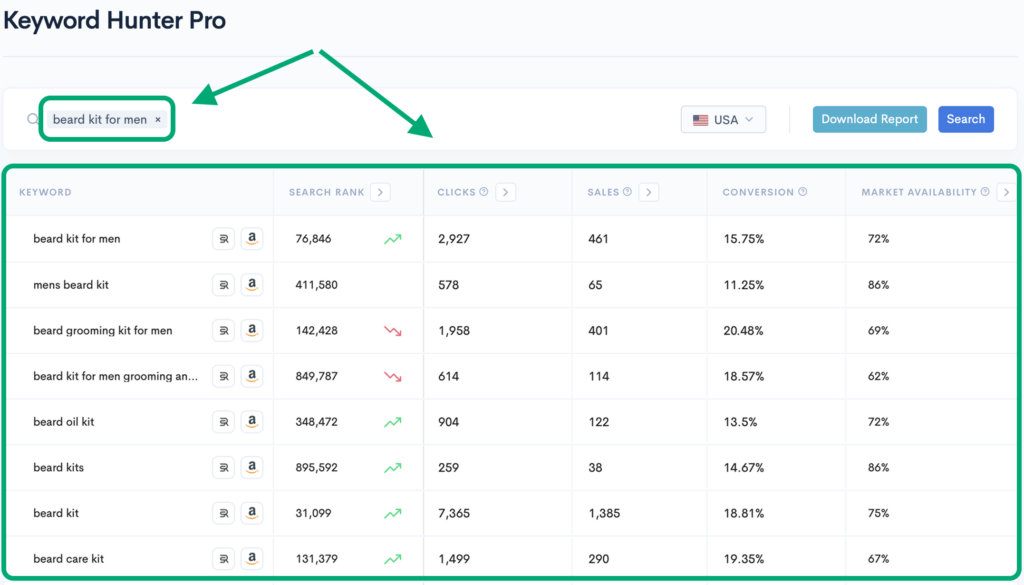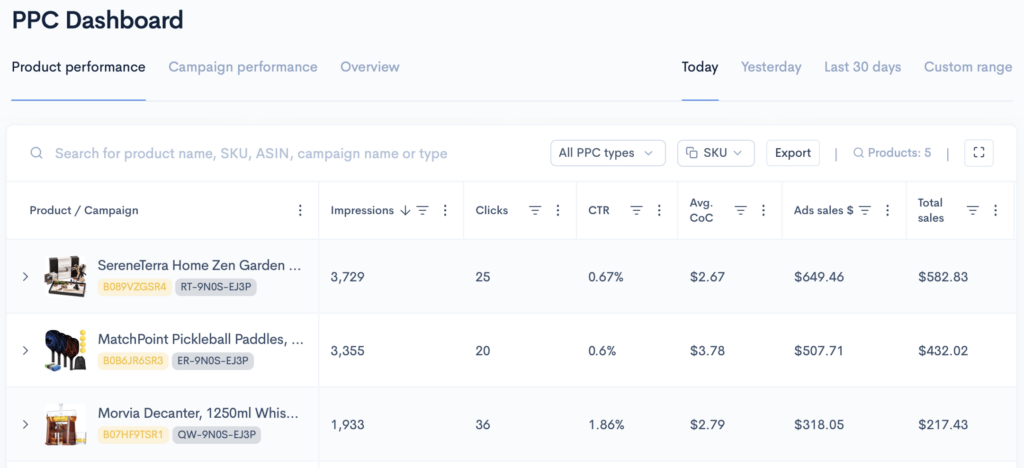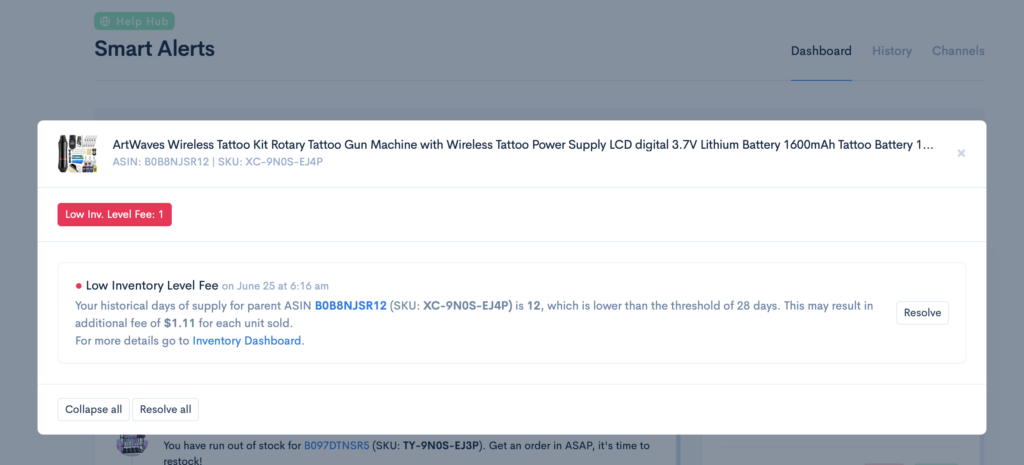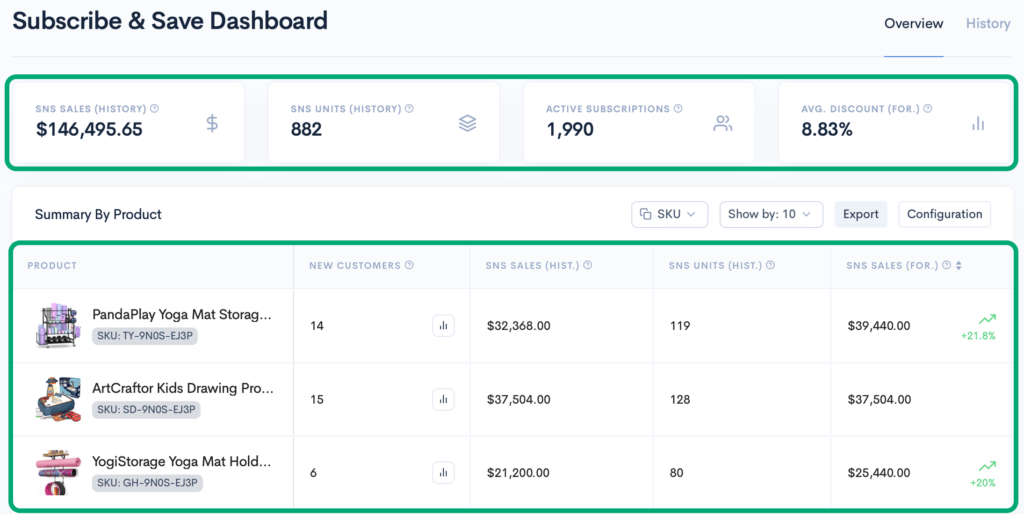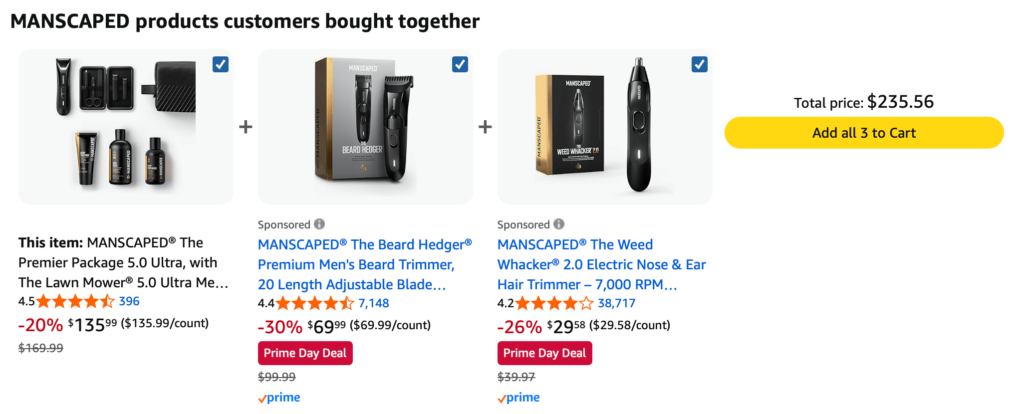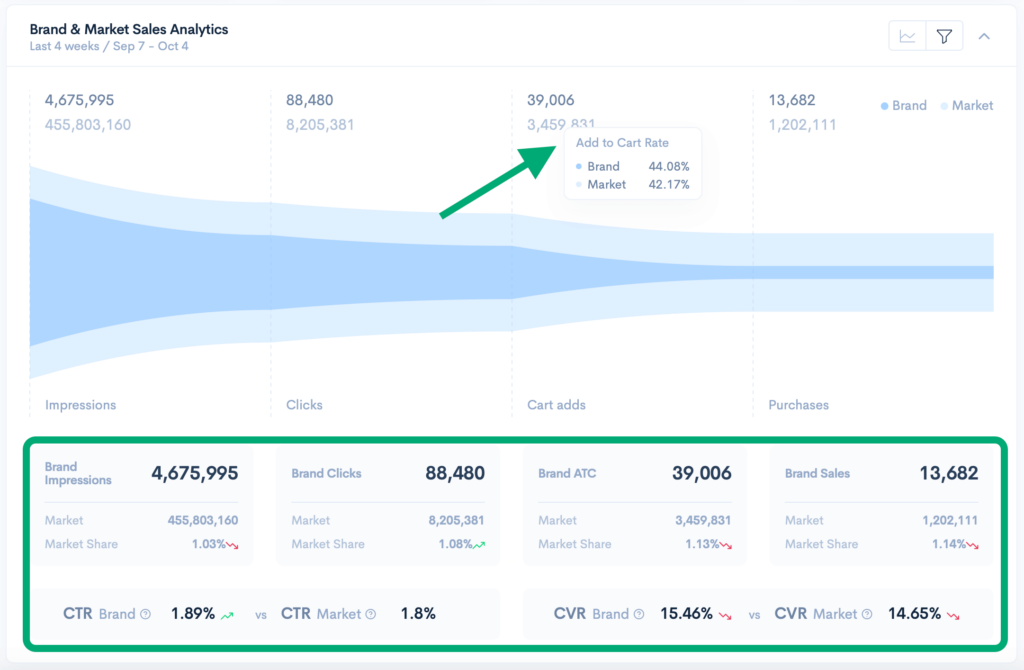What Successful Sellers are Doing to Scale Amazon Brands in 2025
Keren Dinkin, Copywriter
10 min read -
Updated:Amazon has matured into one of the most competitive, data-driven retail ecosystems in the world. In fact, the platform reported $638 billion in net sales in 2024. This represents an 11% year-over-year increase, proving that buyers are still flocking to the marketplace in record numbers.
At the same time, Amazon’s advertising business alone is projected to surpass $60 billion in 2025. Many brands assume this means the only way forward is to spend more on ads.
However, spending more isn’t what drives growth on Amazon in 2025. To scale, you need to focus on the fundamentals, retail-ready listings, smarter ad strategies, efficient operations, and customer loyalty. When these pieces work together, growth becomes sustainable instead of expensive.
In this guide, we explore strategies that actually work to scale a brand on Amazon in 2025.
The 2025 Context: Why This Year Feels Different
Amazon isn’t just another marketplace anymore; it’s a retail search engine and an advertising juggernaut rolled into one. The average product category now has dozens, sometimes hundreds, of new entrants every month. That means you need your sharpest strategies to win visibility and trust.
But at the same time, Amazon’s scale is unmatched. With 310+ million active customer accounts worldwide, every niche, no matter how specialized, has an audience. So to successfully scale brands on Amazon in 2025, you don’t need the biggest budget; you need a system where every part of your business works together.
2025 has also blurred the line between on-site ads (like Sponsored Products) and off-site formats. Amazon is rolling out Prime Video ads and more DSP integrations, creating a full-funnel retail media network.
So, what does all of this mean for you as an Amazon seller?
Your campaigns can now reach shoppers before, during, and after their buying decision. If you know how to connect the dots, that is.
Here are our top strategies to do just that.
Strategy #1: Nail Retail-Readiness First
Think of your product detail page (PDP) as your storefront. Ads might bring in the foot traffic, but it’s the storefront that convinces people to buy. Sellers often jump straight to ads when sales slow down, but without a strong foundation, ad dollars are wasted.
Also, a retail-ready PDP in 2025 isn’t just keyword-stuffed and photo-heavy. It’s designed for trust, clarity, and mobile users who make up the majority of Amazon’s traffic.
That means, you should incorporate:
- Search-friendly titles and bullets: Use SQP Insights to understand how customers phrase their searches. Replace technical jargon with words people actually type into the search bar. For example, you may assume “mens beard kit” is your keyword, but SQP Insights could reveal that “beard kit for men” converts better. This saves you from guesswork and ensures your listings are built on real buyer behavior instead of assumptions.
- Once you’ve aligned your listings with how customers actually search, use Sellerise Keyword Hunter to go deeper. It identifies thousands of high-opportunity keywords, including hidden long-tail terms your competitors might be ignoring. This combination helps you cover both high-volume traffic drivers and conversion-focused niche searches, making your listings visible where it matters most.
- Lifestyle images and video: Since most Amazon shoppers browse on mobile, visuals need to convey size, benefits, and use cases instantly. Short demo videos or “how to use” clips increase conversion.
- A+ Content and comparison charts: These go beyond aesthetics. They help overcome objections, highlight unique selling points, and position your product as superior to competitors.
- Social proof: Reviews that speak to specific benefits (for example, “lasts 12 hours,” “reduced frizz”) resonate more than vague praise. You should also respond quickly in Q&A sections, as customers often read those before making a decision.
- Clear offers and badges: Coupons, Prime eligibility, and Brand Tailored Promotions all help nudge those conversions.
Strategy 2: Treat Amazon as a Full-Funnel Advertising Platform
Shoppers don’t just come to Amazon ready to buy; so many of them research here, compare products, watch videos, and then decide. That’s why treating Amazon as a full-funnel advertising platform matters. If you only run one type of ad, you’re leaving gaps in that journey.
Here’s what you should be doing:
- Sponsored Products: These are your workhorses at the bottom of the funnel. They capture shoppers who already know what they’re looking for and turn intent into conversions.
- Sponsored Brands and Video: These build awareness at the top of the funnel, introducing your brand while shoppers are still comparing options.
- Sponsored Display and DSP: These keep you visible after the first click. They retarget browsers who didn’t buy and even reach new audiences outside of Amazon.
When these formats run in isolation, you’ll see some results. But when you line them up as a system, awareness driving searches, searches leading to conversions, retargeting pulling people back, that’s when your spend works harder and scaling becomes efficient. Track your ad performance in PPC Dashboard.
Strategy 3: Tighten Operations and Profitability
Behind every successful Amazon brand is a solid operational backbone. Ads may drive visibility, but it’s operations that determine whether growth is sustainable.
Here are the key areas you need to be monitoring:
Inventory and Logistics
Amazon keeps updating its fulfillment network by adding placement and distribution programs to speed up delivery. That’s great in theory, but if your stock levels are off, you’ll either run out (and lose sales) or pay too much in storage fees. The sellers who scale brands in 2025 are the ones using forecasting tools to stay balanced, especially when demand spikes around seasonal peaks.
Cost Management
Margins are under pressure. Rising FBA fees, shipping surcharges, and raw material costs mean you must audit costs line by line. Sometimes bundling products increases average order value and offsets higher logistics costs. In other cases, negotiating better terms with suppliers or considering hybrid fulfillment models can restore your profitability.
Automation and Tools
Managing all this by hand is nearly impossible at Amazon’s pace. To get ahead, you need to automate wherever you can. This could be in repricing, ad bidding, or review monitoring. AI has also become part of the toolkit. It can help you spot demand trends, flag winning keywords, and even draft first-pass content. The less time you spend on repetitive tasks, the more you can focus on strategy.
Managing all this by hand is nearly impossible at Amazon’s pace. With Sellerise Smart Alerts, you never miss critical changes, like sudden buy box loss, suppressed listings, or unexpected fee increases. Instead of checking dashboards all day, you get instant notifications so you can fix problems before they burn profits.
Strategy 4: Drive External Traffic to Boost Ranking
Amazon rewards brands that bring in shoppers from outside the platform. External traffic doesn’t just increase visibility; it also improves organic ranking because Amazon values signals that your product is in demand.
But where does this external traffic come from?
- Social media and influencers: TikTok, Instagram, and YouTube creators generate awareness and create content that doubles as Amazon listing assets.
- Email and SMS lists: Building your own customer list means you can drive repeat purchases on demand. A timely message about a restock or promotion can reignite momentum.
- Content marketing and SEO: Articles, tutorials, and reviews on external sites funnel customers to your Amazon listing, creating authority signals.
- Amazon’s Brand Referral Bonus: By sending external traffic, you earn a rebate on referral fees, making it cost-effective to blend off-Amazon campaigns with your marketplace strategy.
When done right, external traffic creates a cycle of momentum; You get more eyes, more sales, better ranking, and lower ad dependency.
Strategy 5: Build Loyalty and Retain Customers
Winning new customers is great, but holding onto them protects your margins. And in 2025, loyalty is more than just a nice thing to have, it can give you the edge.
The tools you need for loyalty on Amazon include:
Subscribe & Save: Encourages recurring orders for consumables and stabilizes your revenue. For in-depth analysis of Subscribe & Save buyers, use SnS Dashboard.
- Brand Tailored Promotions: Let’s you target specific groups like repeat buyers or cart abandoners with customized offers.
- Customer Engagement Tool: Enables messaging Amazon store followers about new launches or deals, turning Amazon into more than just a transactional platform.
Retention also depends on how customers feel about your brand. Packaging, customer support, and even post-purchase instructions affect repeat buying. When customers return without paid ads, your cost per acquisition drops and frees up resources to expand further.
Strategy 6: Expand Smartly-SKUs, Categories, and Markets
It can be tempting to chase growth by adding products or jumping into new markets. However, if you expand without a plan, what looks exciting at first often turns into wasted effort and higher costs.
Here’s how to approach new SKUs, categories, and markets in a way that supports growth:
When to Add SKUs
Before launching that new size, color, or bundle, make sure the data backs it up. Tools like Amazon’s “Frequently Bought Together” insights can point out natural bundle opportunities. The key is to grow deliberately. Adding too many variations too quickly often just spreads your sales thin instead of increasing them.
Entering New Categories
Some categories are more promising than others. For example, areas like sustainable products, health, and premium home goods are expanding faster than crowded spaces like electronics. Pick categories where your brand has a genuine advantage, whether that’s quality, story, or a unique angle, instead of joining a race to the lowest price.
Going Global
Amazon has made cross-border selling easier, but that doesn’t mean you can just copy-paste your current setup. Every market has its own rules, buyer expectations, and pricing realities. If you’re expanding internationally, take the time to adapt your listings and approach to fit local needs. A little localization can make the difference between a flop and a foothold.
Strategy 7: Leverage Data and AI for Smarter Decisions
If you want to scale brands in 2025, you can’t rely on guesswork. Amazon gives you access to an enormous amount of data, and when you combine that with AI-driven tools, you get the clarity to make sharper, faster decisions.
Making the Most of Amazon’s Dashboards
Amazon has steadily expanded its reporting features, and these dashboards should be part of your weekly workflow:
- Search Query Performance (SQP Insights): This tells you the exact words shoppers are typing, what they click, and whether they buy. If you’re still building listings around assumptions instead of SQP insights, you’re leaving money on the table.
- Brand Analytics: Beyond keyword data, this shows repeat purchase behavior and which products customers commonly buy together. It’s a goldmine for deciding which SKUs to bundle, which ones need retention campaigns, and where to double down.
- Advertising reports: These break down performance by keyword, match type, and placement. They show you which campaigns are wasting spend and which deserve more budget, so you can relocate smarter.
The real value of these dashboards comes when you use them consistently and start spotting patterns. Certain keywords consistently drive profitable sales, some campaigns perform better at specific times of year, and a handful of products bring in higher lifetime value than others. Those insights are what turn raw data into smarter decisions.
If pulling all of this together feels overwhelming, Sellerise can help. We combine profit and loss views, keyword tracking, review automation, and smart alerts in one place. So, instead of chasing numbers across dashboards, you can act on the signals that matter.
How AI Fits In
AI tools can now help you use this data to move faster. Here’s how:
- Content optimization: AI can draft titles, bullets, and A+ content that already include the right mix of keywords. You still need to refine for voice and accuracy, but it saves hours of manual work.
- Predictive bidding: Instead of reacting to yesterday’s performance, AI-powered bidding tools adjust in real time, scaling spend when conversions are strong and pulling back when they’re not.
- Demand forecasting: Algorithms can spot early signs of demand spikes and help you stock up before you miss sales. They’re equally good at flagging when you’re at risk of overstocking, which protects your margins.
You don’t need to become a data scientist to benefit from all this. What you do need is a consistent rhythm: check the right dashboards, use AI to automate repetitive tasks, and leave yourself the space to think strategically.
Strategy 8: Anticipate Risks Unique to 2025
Scaling in 2025 also involves protecting your margins and rankings from avoidable setbacks. Several risks are more pressing this year than in the past, and staying ahead of them will make scaling much smoother.
Rising Fulfillment and Storage Costs
Amazon charges long-term storage fees on inventory that sits in its warehouses too long (typically over 365 days). Also, the Inventory Performance Index (IPI) directly affects how much stock you’re allowed to send in. Too much inventory means costly surcharges, but running out leaves you invisible in search until you’re restocked.
The fix?
- Keep an eye on your IPI
- Use demand-forecasting tools that account for seasonality
- For slow-moving products, ship smaller batches more often.
Escalating Ad Costs
Competition is driving click prices up across categories. Even efficient campaigns now cost more to maintain, which can eat into profitability if you rely too heavily on ads.
For this, you should:
- Improve conversion rates so each click delivers more revenue
- Develop off-Amazon traffic sources such as social campaigns or email lists
- Track TACOS instead of just ACOS to understand the overall impact of spend.
Compliance Pressures
If you sell in regulated categories like supplements, cosmetics, or children’s products, expect stricter documentation requests. Amazon can delist products without warning if paperwork isn’t in order.
Ensure you:
- Keep certifications and test reports accessible
- Create a compliance calendar to track requirements by region
- Avoid unverified claims in listings or ads
Evolving Customer Expectations
Shoppers now expect fast delivery, eco-friendly packaging, and responsive service by default. If you fall short, it could lead to negative reviews, which directly hurt your ranking and ad performance.
Remember to:
- Audit packaging for both protection and sustainability
- Review return reports to catch recurring issues early
- Respond quickly to customer inquiries to maintain trust
Final Thoughts: How to Scale Brands on Amazon in 2025
If you’re trying to scale on Amazon this year, throwing more money at ads isn’t the answer. What really works is building a system that supports itself. When your listings convert better, your ads become more efficient. When operations run smoothly, your margins hold up. When you keep customers coming back, growth feels less like a scramble and more like momentum.
The brands that stand out in 2025 won’t be the ones with the biggest budgets. They’ll be the ones that treat Amazon as a retail-media ecosystem, connect the dots between all these moving parts, and let data guide the way. That’s how you set yourself up to scale brands on Amazon in 2025.
Keren Dinkin, Copywriter
Professional in digital marketing and content creation, with 7 years of experience in the field. Keren has a strong background in e-commerce, helping businesses grow their online presence and achieve their goals.

